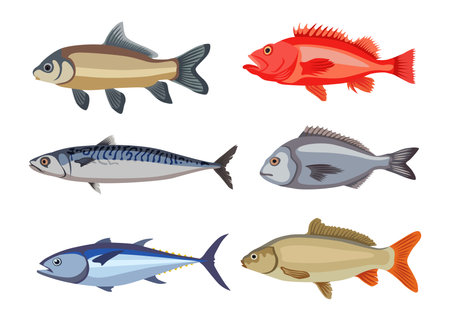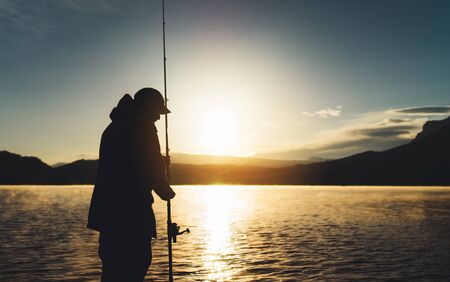1. Introduction to Catch and Release in Britain
Catch and release has become a widely adopted practice among anglers across the United Kingdom, reflecting a blend of legal requirements, ethical responsibilities, and ecological awareness. In many British waters, especially rivers and lakes managed for salmon, trout, and coarse fish, local bylaws and national regulations often stipulate mandatory catch and release periods to protect vulnerable stocks or threatened species. Beyond compliance, the UK angling community increasingly recognises the moral imperative to minimise harm to fish populations and maintain healthy aquatic ecosystems. This commitment is further strengthened by conservation initiatives led by organisations such as the Angling Trust and various river trusts, which promote best practices that support biodiversity. As British anglers navigate these responsibilities, understanding how external factors—such as weather patterns and water conditions—directly influence the survival rates of released fish has become crucial. This article explores the nuanced relationship between environmental variables and successful catch and release outcomes in Britain’s diverse fisheries.
Understanding British Weather Patterns
When fishing in Britain, it’s essential to understand how the nation’s unique weather patterns can influence both freshwater and saltwater environments. The UK is famous for its unpredictable weather, with frequent changes in wind, rainfall, and temperature. These factors not only affect fish behaviour but also play a crucial role in the success of catch and release practices. Below is a guide to common British weather conditions and their potential impact on fishing:
| Weather Condition | Description | Impact on Freshwater Fishing | Impact on Saltwater Fishing |
|---|---|---|---|
| Rain | Light drizzles to heavy downpours are common year-round. | Increased water flow can stir up food sources but may stress fish during spates. | Can lower salinity near estuaries and bring debris, affecting fish distribution. |
| Wind | Prevailing south-westerlies, occasional gales, and calm spells. | Stirred surface increases oxygen but may make casting challenging. | Affects tides, wave action, and bait presentation; strong winds may push baitfish closer to shore. |
| Sunshine | Intermittent sunny spells even in summer months. | Higher temperatures raise metabolism; fish seek shade or deeper water. | Improves visibility but can cause fish to stay deeper or further from shore. |
| Mist & Fog | Frequent in autumn and spring mornings, especially by rivers and lakes. | Lowers light penetration; fish may feed more actively at the surface. | Difficult navigation but often means calmer seas; fish may venture closer to shore. |
| Cold Snaps | Sudden drops in temperature, often overnight. | Fish become sluggish; lower feeding activity as metabolism slows. | May drive species to deeper, warmer waters temporarily. |
The Influence of Regional Variations
The UK’s geography brings distinct regional weather differences. For example, Scotland experiences colder winters and shorter summers than southern England. Coastal areas are generally milder and wetter compared to inland regions. Anglers must adapt their tactics depending on localised microclimates, particularly when practicing catch and release, as sudden shifts in weather can place additional stress on fish populations.
Tips for Interpreting Weather Before Fishing
- Check Local Forecasts: Always review Met Office updates for real-time data specific to your location.
- Monitor Water Levels: After heavy rain or droughts, be cautious of low oxygen levels or fast currents affecting fish recovery post-release.
- Adjust Techniques: Use lighter tackle during clear, sunny days or switch to deeper lures after cold snaps to increase your chances of successful release.
By understanding these British weather patterns and their effects on aquatic environments, anglers can better plan their outings for optimal catch and release outcomes while protecting native fish stocks.

3. Impact of Temperature on Fish Physiology and Recovery
Temperature plays a crucial role in the catch and release process, particularly across Britain’s varied climates. Both air and water temperatures can significantly influence a fish’s metabolism, stress response, and survival odds after being released back into the wild. When water temperatures rise—especially during summer months or unseasonably warm spells—fish metabolism speeds up, causing them to require more oxygen. However, warmer water holds less dissolved oxygen, making it more challenging for fish to recover from the exertion of being caught. This is especially relevant for popular British species like trout and grayling, which are sensitive to temperature fluctuations.
Conversely, in colder conditions common during early spring or late autumn, a fish’s metabolism slows down. While this can reduce immediate stress, it may also slow recovery times as physiological processes operate at a reduced pace. Fish may take longer to regain normal behaviour and evade predators post-release. Anglers should be mindful that sudden changes in air temperature—such as handling fish out of cold water into much warmer air—can further stress the animal by shocking its system.
In practical terms, understanding these temperature effects means British anglers should adapt their techniques throughout the year. During hot spells, consider fishing during cooler parts of the day and minimise handling time to help improve post-release survival rates. Similarly, when fishing in cold conditions, handle fish gently and swiftly return them to the water to avoid additional stress. By aligning angling practices with local weather patterns and seasonal shifts, you can maximise the chances of a successful catch and release while supporting healthy fish populations across Britain’s rivers and lakes.
4. Influence of Water Levels and Flow on Fish Welfare
Understanding the impact of water levels and flow rates on fish welfare is crucial for successful catch and release practices in Britain. Throughout the year, British rivers experience seasonal fluctuations that significantly affect both the physical environment and the behaviour of fish species such as trout, salmon, and coarse fish. These changes can either support or hinder a fish’s recovery after release.
Seasonal Water Level Fluctuations
During spring and autumn, British rivers often see higher water levels due to increased rainfall. In contrast, summer droughts or winter freezes can cause lower flows. Each scenario presents unique challenges:
| Season | Typical Water Condition | Impact on Released Fish |
|---|---|---|
| Spring/Autumn | Higher water levels, faster flow | Easier oxygenation but increased energy needed for fish to recover and hold position; potential for displacement downstream |
| Summer | Lower water levels, slower flow | Reduced dissolved oxygen; higher risk of heat stress; limited safe resting spots for released fish |
| Winter | Low water temperatures; possible ice formation | Slower metabolism in fish; reduced activity but also slower recovery rates post-release |
River Flow Rates and Fish Health
The speed of river flow directly influences the amount of dissolved oxygen available to fish—a vital factor during recovery. Fast-flowing waters tend to be better oxygenated, allowing fish to recover more quickly from exertion. However, strong currents can exhaust a weakened fish, especially if released without care.
Best Practices for Anglers During Varying Conditions
- Select Release Sites Carefully: In high water or fast flows, choose sheltered backwaters or eddies where fish can rest without fighting strong currents.
- Avoid Low Oxygen Zones: During hot spells or droughts, avoid fishing in shallow stretches with low oxygen—these conditions make recovery harder and mortality more likely.
- Treat Fish Gently: Handle fish minimally and keep them facing into the current when releasing so they can re-oxygenate efficiently.
Summary Table: Water Level & Flow Considerations for Catch and Release Success in Britain
| Condition | Recommended Action for Anglers | Fish Welfare Outcome |
|---|---|---|
| High flow/High water level | Release in calm areas near banks or behind structures | Reduces stress and exhaustion; supports recovery |
| Low flow/Low water level (summer) | Avoid fishing at peak heat; use barbless hooks; limit air exposure during handling | Lowers risk of heat and oxygen stress; improves survival chances post-release |
| Icy/very cold conditions (winter) | Limit handling time; return fish promptly to minimise chilling effects | Avoids prolonged stress; supports slow but steady recovery in cold water |
This understanding of how seasonal water fluctuations and river flow rates influence released fish is key to refining catch and release techniques in British waterways. By adapting strategies to match these natural cycles, anglers can better safeguard local fish populations while enjoying their sport responsibly.
5. Rainfall, Water Clarity and Practical Catch and Release Tips
British weather is famously unpredictable, and rainfall has a direct impact on river levels, water clarity, and the behaviour of local fish species. Understanding how these factors interact is crucial for any angler aiming to improve their catch and release outcomes. Below, we break down the effects of rainfall and water clarity on angling tactics in Britain, followed by practical, field-tested tips to maximise release success in our diverse waters.
How Rainfall Affects British Waters
After heavy rain, rivers and lakes often swell and flow faster, which can displace fish from their usual haunts. Increased flow also brings more sediment into the water, reducing visibility. For many species—such as trout, grayling or chub—this means they are less likely to feed actively or may move to calmer backwaters until conditions settle. Anglers must adapt by targeting slack water zones and using attractor patterns or baits that stand out in murky conditions.
The Role of Water Clarity
Clear water usually means more cautious fish, requiring lighter lines and subtle presentations. In contrast, coloured or muddy water allows anglers to use heavier gear without spooking their quarry. However, poor clarity can make it harder for fish to locate lures or flies quickly, potentially increasing handling time—a key factor affecting survival after release.
Practical Catch and Release Tips for British Anglers
- Monitor Recent Rainfall: Use local river level gauges or apps like RiverApp UK to check current conditions before heading out.
- Adapt Your Tactics: After rainfall, fish near eddies, behind submerged structures, or along the margins where fish seek refuge from strong currents.
- Standout Presentations: In coloured water, opt for brightly coloured lures or scent-enhanced baits so fish can find them quickly—reducing time spent playing the fish.
- Minimise Handling: Have unhooking mats ready and wet your hands before touching any fish to protect their delicate slime layer—especially important when silt is suspended in the water.
- Avoid Long Fights: Turbid water can stress fish more quickly; use appropriate tackle to land them swiftly and reduce exhaustion before release.
By understanding how rainfall and water clarity influence British fisheries, you can adjust your approach to both increase your catches and ensure more released fish survive to fight another day. Adapting your methods for changing weather not only boosts angling success but also supports the long-term health of Britain’s aquatic ecosystems.
6. Best Practices for Catch and Release in Varying Conditions
Ensuring the survival of released fish requires adapting your approach to Britain’s famously unpredictable weather and diverse water conditions. Below are actionable strategies tailored to maximise fish welfare, whether you’re casting on a sunlit chalk stream or braving a drizzly Scottish loch.
Adapting to Weather Variability
Hot Spells
During heatwaves or unseasonably warm days, fish are more susceptible to stress. Fish early in the morning or late in the evening when water is cooler. Use barbless hooks for quicker unhooking, and minimise handling time. Keep the fish wet at all times and avoid lifting them out of the water if possible.
Cold Snaps
In colder weather, fish can be less active and more fragile. Wet your hands before handling to protect their slime coat, and avoid exposing them to freezing air. Handle quickly but gently, especially with species like grayling and trout common in British rivers.
Responding to Water Conditions
High Flows After Rain
After heavy rain, rivers often run high and turbid. In these conditions, use stronger tackle to land fish swiftly, reducing exhaustion. Release fish in calmer margins rather than fast currents, giving them time to recover safely.
Low Water Levels
Low water during dry spells means lower oxygen levels and higher stress for fish. Limit fishing during extreme lows, and always revive fish thoroughly before release—gently supporting them facing upstream until they swim off strongly.
Selecting Tackle and Techniques
Match your gear to local conditions: lighter tackle suits clear, shallow streams while heavier setups help you control fish quickly in strong flows. Always carry forceps or a disgorger for swift hook removal—a must-have in every British angler’s bag.
Transport and Revival Methods
If moving a fish briefly (for example, to remove from snags), cradle it gently in a soft net and keep it submerged. When reviving, support the fish facing into the current so oxygen-rich water flows through its gills—essential after energetic fights or when dissolved oxygen is low due to warmth.
Summary Tip:
The golden rule across Britain’s varied climates? Treat every catch as if its survival depends on you—because it does. By tailoring your methods to each day’s weather and water conditions, you’ll help ensure thriving fisheries for generations of British anglers.
7. Conclusion: Conservation and Responsibility in British Angling
In summary, understanding how weather and water conditions affect catch and release success is vital for the future of British angling. Responsible anglers recognise that their actions have a direct impact on fish welfare, local ecosystems, and the sustainability of fisheries across the UK. By staying informed about changing environmental factors, adapting techniques to suit conditions, and always prioritising fish health during handling and release, we contribute to the long-term viability of our treasured waters. Ultimately, conservation-minded angling is not just about following regulations—it’s about fostering a respectful relationship with nature. As stewards of Britain’s rivers, lakes, and coastlines, let us continue to promote good practice, share knowledge within our communities, and ensure that our unique fishing heritage thrives for generations to come.

